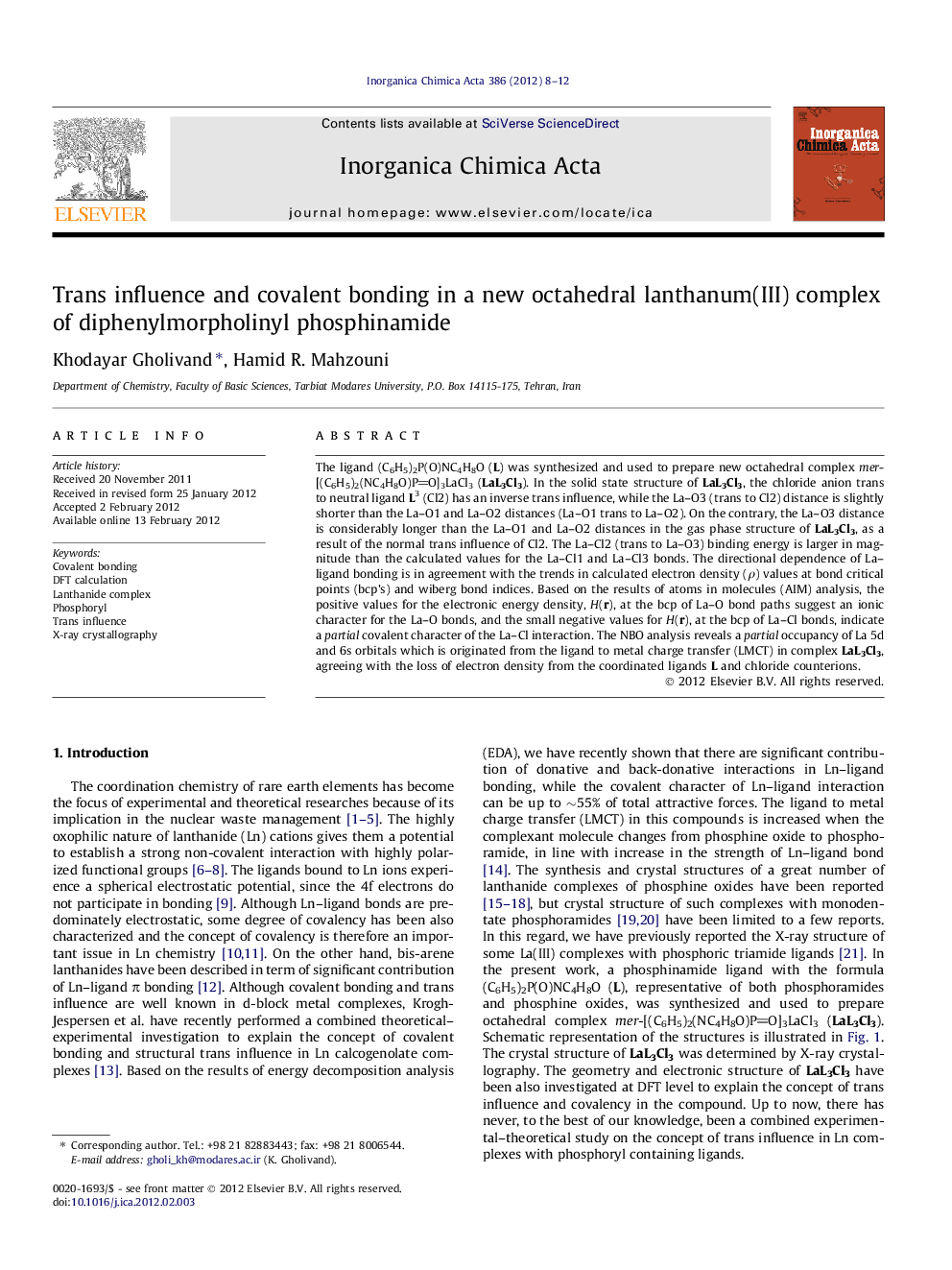| Article ID | Journal | Published Year | Pages | File Type |
|---|---|---|---|---|
| 1310976 | Inorganica Chimica Acta | 2012 | 5 Pages |
The ligand (C6H5)2P(O)NC4H8O (L) was synthesized and used to prepare new octahedral complex mer-[(C6H5)2(NC4H8O)PO]3LaCl3 (LaL3Cl3). In the solid state structure of LaL3Cl3, the chloride anion trans to neutral ligand L3 (Cl2) has an inverse trans influence, while the La–O3 (trans to Cl2) distance is slightly shorter than the La–O1 and La–O2 distances (La–O1 trans to La–O2). On the contrary, the La–O3 distance is considerably longer than the La–O1 and La–O2 distances in the gas phase structure of LaL3Cl3, as a result of the normal trans influence of Cl2. The La–Cl2 (trans to La–O3) binding energy is larger in magnitude than the calculated values for the La–Cl1 and La–Cl3 bonds. The directional dependence of La–ligand bonding is in agreement with the trends in calculated electron density (ρ) values at bond critical points (bcp’s) and wiberg bond indices. Based on the results of atoms in molecules (AIM) analysis, the positive values for the electronic energy density, H(r), at the bcp of La–O bond paths suggest an ionic character for the La–O bonds, and the small negative values for H(r), at the bcp of La–Cl bonds, indicate a partial covalent character of the La–Cl interaction. The NBO analysis reveals a partial occupancy of La 5d and 6s orbitals which is originated from the ligand to metal charge transfer (LMCT) in complex LaL3Cl3, agreeing with the loss of electron density from the coordinated ligands L and chloride counterions.
Graphical abstractNew octahedral complex mer-[(C6H5)2(NC4H8O)PO]3LaCl3 has been introduced. The Cl2 anion, trans to neutral phosphoryl containing ligand, shows inverse and normal trans influences, respectively, in the solid state and gas phase structures of the complex. The directional dependence of La–ligand distances indicates a partial covalent character of the bonding.Figure optionsDownload full-size imageDownload as PowerPoint slideHighlights► New octahedral complex mer-[(C6H5)2(NC4H8O)PO]3LaCl3 has been introduced. ► The concept of trans influence has been investigated for the compound. ► The NBO analysis reveals a partial covalent character of the bonding in the complex.
